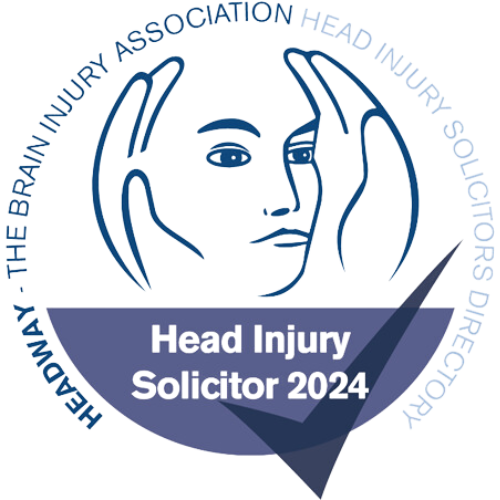Start your FREE Enquiry
Which Industries Are Most At Risk Of Workplace Accidents?
Employees in certain industries are more at risk of being the victim of a workplace accident. The following industries carry a higher incident rate than others:
Manufacturing
Involves the use of machinery, manual handling and maintenance, operating vehicles and racking systems. The most common manufacturing-related injuries include:
- Injuries from machinery: Mechanical faults and the improper handling of machinery can lead to accidents including fractures, first-degree burns, concussions and even death.
- Exposure to harmful substances: Workers can be exposed to harmful substances and chemicals which can lead to breathing issues and skin irritations such as industrial dermatitis.
- Manual handling injuries: Repetitive tasks and movement of heavy objects is often involved in manufacturing. This can lead to manual handling injuries due to employees adapting awkward postures to lift, carry or drag, heavy or awkward shaped objects. Or through the repetitive movement of arms, legs and back, leading to an injury or making an existing injury worse.
Construction
According to the HSE’s Construction statistics in Great Britain 2019 report, 79,000 construction workers suffered from work-related ill health (new or long-standing). Out of this number, 62% reported musculoskeletal disorders as the cause of their pain. Construction workers were also found to be more likely to experience a fall from height or be struck by a moving/falling object than in other industries. Construction accident claims can arise from:
- Work-related illness: It is not just physical injuries that construction workers are at risk of in the workplace but also work-related ill health such as industrial dermatitis, occupational asthma and HAVS.
- Contact dermatitis: Painters and decorators, along with carpenters and joiners are twice more likely to suffer from contact dermatitis than in other industries.
- COPD: Roofers were found to be at a higher than average risk of developing COPD than other construction works, due to their possible past exposure to asbestos.
- Occupational Asthma: Welders, painters and sheet metal workers are at risk of developing occupational asthma due to the airborne particles that they breathe in.
Culinary
Working in kitchens can be a dangerous environment due to the intense heat, chance of spillages, risk of being burnt or cutting yourself. Kitchen accidents can happen as a result of:
- Cuts from kitchen Equipment: Professional kitchens are full of hazardous sharp kitchen equipment such as knives, food processors and graters. Equipment left unsupervised can lead to accidents involving lacerations and even amputations.
- Kitchen burns: Working amongst hot stoves, ovens, boiling water and open flames can pose a serious risk of burns.
- Repetitive strain injury: RSI in form of tennis elbow is common amongst chefs, due to the repetitive strain on the elbow caused by chopping and slicing.
- Chef’s Foot – Hallux Rigidus: Arthritis of the joint of the big toe is medically known as Hallux Rigidus. It causes pain and stiffness in the joint and can even lead to difficulty walking as the condition progresses. It affects people who work on their feet for extended hours at a time, such as chefs.
Agriculture
According to the HSE Workplace fatal Injuries in Great Britain 2019 report, most fatal injuries occur in the agriculture, forestry and fishing industry. The most common types of farming accident injuries include:
- Machinery accidents: Heavy machinery is used a lot in farming practices such as ploughing. Mechanical faults and the users’ failure to operate the machine properly can lead to serious accidents.
- Vehicle accidents: Tractors and quad bikes are frequently used on farms to carry out tasks. Human error or poorly maintained vehicles can lead to accidents.
- Livestock accidents: Animals can be unpredictable, kicks and bites from livestock can lead to serious injury.
- Falls from height: Injuries can be sustained through falls from working at height in barn lofts.
Nursing
Nurses are prone to manual handling accidents and through handling substances that can irritate the skin. Nurses are commonly affected by the following injuries:
• Slips, trips and falls: Caused through slipping on wet surfaces and tripping over objects left lying around.
• Cuts: Through pricking skin on sharps or needle sticks.
• Assault: Nurses are at risk of being assaulted by patients or patient’s family members.
• Stress: Nursing is a highly stressful profession, where symptoms of burnout and work-related stress are common. Nurses are expected to work long shifts with minimal breaks, under a great deal of pressure.
• Muscular Injuries: Especially back injuries are common amongst nursing staff, due to having to lift and move heavier patients.
Transportation and delivery drivers
Delivery drivers are particularly at risk of being involved in road traffic accidents, due to driving in busy city centres where they are at risk of colliding with cyclists, motorcyclists and pedestrians.
- Musculoskeletal injuries: Drivers can suffer from musculoskeletal injuries due to poor posture whilst driving to extended periods of time.
- Exhaustion: Drivers can often be put under a lot of pressure from their employer to drive for long periods of time without taking breaks. This can lead to exhaustion which can lead to road accidents caused through tiredness.
If any of the above injuries have affected you, please get in touch today. Or, read more on how to prevent accidents in the workplace.




